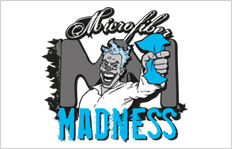Understanding pH in All-Purpose Cleaners: What Every Detailer Should Know
Posted by James Rogers on 7th Aug 2025
Understanding pH in All-Purpose Cleaners: What Every Detailer Should Know
Ever wondered why one cleaner strips protection while another seems safe on delicate fabrics? Or why your favorite APC foams like crazy while another barely lathers? The answer often lies in one critical detail. It's pH.
What Is pH and Why Should You Care?
pH is a scale that tells you how acidic or alkaline (basic) a substance is from 0 (acidic) to 14 (alkaline), with 7 being neutral (like water).
So why does this matter for detailing?
Because pH plays a major role in how a cleaner behaves. It can define how aggressive it is, what kinds of grime it breaks down best, and whether it's safe for certain materials, such as upholstery or coated paintwork. The last thing you want to do is torch a customer's car because their delicate finish couldn't handle the power of your preferred APC dilution ratio.
Why Are Most APCs Alkaline?
Let’s start with the most common question regarding APC:
“Why do all-purpose cleaners usually have a high pH?”
Great question. Most APCs fall in the alkaline range. That’s by design. Alkaline cleaners are powerhouses when it comes to breaking down:
-
Grease and oil
-
Bug splatter
-
Road film
-
Protein-based contaminants (like bird droppings and sweat)
These are all organic materials, and alkaline solutions are especially good at lifting and dissolving them. This is why APCs are normally Alkaline.
Let’s Talk Numbers: Real pH Ranges of Popular APCs
Here’s a quick snapshot of the pH ranges for some of the most popular APCs we carry:
| Product | pH Range |
|---|---|
| Bioworx APC | 8–9 |
| Oberk APS | 9.5 |
| P21S Auto Wash | 9.6 |
| Tuga Universal Cleaner | 10.5–11 |
| CARPRO Multi X | 12.6 |
| Koch Chemie Green Star | 12.5 |
| Car Candy Hot Tamale | 12–14 |
| Oberk MPC (Pro Strength) | 13 |
The higher the pH, the more powerful the punch. But the more careful you have to be. Now there is also an element of dilution ratio. The more water in the mixture, the more diluted the concentration is, bringing down the potency, or the level of aklaidity. Becasue of this, thats why we always recomend sticking to the ratios we have listed in our product descriptions.
What Does High (Alkaline) pH Do Exactly?
Let’s break it down further and understand the science behind it:
Enhances Surfactants
Alkaline conditions boost surfactant performance. That means:
-
More effective foaming
-
Better micelle formation (the tiny bubbles that trap and lift dirt)
This makes alkaline APCs more efficient, especially on grimy jobs. The last thing you want to do is start smearing or working the product further into the surface. The foam and the micelle formation help "Lift" contaminants from the surface, making them more easily extracted or removed. usually in a safer manner when speaking about clearcoat.
Versatile by Dilution
Another benefit?
You can customize the power.
-
Light dilution (1:15–1:30): great for dashboards, door panels, light interior cleaning
-
Medium dilution (1:5–1:10): perfect for tires, plastics, and lightly dirty engine bays
-
Strong dilution or undiluted: use for wheel wells, undercarriages, and heavy grease
CAUTION: Can High-pH Cleaners Strip Wax or Sealant?
Yes. Especially when:
-
The pH is above 10–11
-
You're using it undiluted or nearly so. That means this product is insanely potent and extremely strong.
-
The protection is already worn down
If you're prepping for a coating or correction then great! But if you're just doing maintenance, this could work against you and require you to reapply protection.
Are High-pH APCs Safe on Fabric?
Here’s where you need to pay attention.
“Can I use my strong APC on seats or carpets?”
You can, but it comes with risks:
-
Dye bleeding or fading: Effectively removing the pigment of the fabric or leather. Unless thats your intention, that's more harm than good.
-
Stiffness or fiber damage
-
Residue buildup (unless thoroughly rinsed or extracted)
If you're dealing with delicate upholstery, we always recommend using something designed for the job. A GREAT example here is for Alcantera fabric. While some may still want to use APC for the job, we highly recommend using the microsuede cleaner from Dr. Beasley's, as we know it's safe and made exactly for the job.
Dedicated Fabric Cleaners We Recommend:
When you're cleaning sensitive surfaces, here’s what we trust:
What Materials Need Extra Caution?
Some surfaces just don’t mix well with strong alkalinity.
Avoid high-pH APCs on:
-
Leather (especially aniline or vintage)
-
Alcantara / Microsuede
-
Dyed natural fibers
-
Luxury interiors or vintage vehicles
Use a dedicated leather or interior cleaner instead. Your customer (or your own car) will thank you.
Does Dilution Change pH?
Absolutely, but not dramatically.
Take MultiX for example:
-
At full strength: pH ~12.6
-
At 1:10: pH drops closer to 10–11
-
At 1:20+: It drops a bit more, but stays alkaline
So yes, dilution brings down the bite, but even diluted, these cleaners still pack cleaning power.
Final Thoughts: Picking the Right APC for the Job
When choosing an APC, ask yourself:
-
What surface am I cleaning?
-
What level of grime am I dealing with?
-
Do I need to preserve wax or coatings?
-
Is the material sensitive to strong cleaners?
Start mild, and dial it up only as needed. When in doubt, test in an inconspicuous area first, and let the product work, rather than scrubbing aggressively.
Questions? We’ve Got Answers.
Still not sure what to use? Reach out to us at Sky’s the Limit Car Care or shoot us a message; we’re happy to help you find the perfect product and dilution for your needs.
Whether you're a weekend warrior or a full-time pro, understanding pH can be the difference between a good detail... and a disaster detail. So make sure you use the right products for the job!










